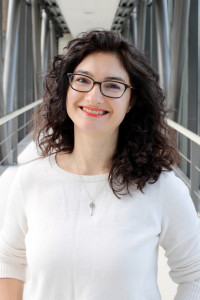Assistant Professor

My primary research interest is at the crossroads between endosome biology and ubiquitin enzymology. During my time in the Neefjes group I have been delving into the relationship between endosomal compartment architecture and dynamics, and how these are modulated by reversible ubiquitination to promote endosome function in space and time. My colleagues and I have recently discovered that endosomes participate in the perinuclear endosome cloud—an architectural construct necessary for organized cargo transport—and that acceptance into and release out of this cloud are determined by an ER-associated complex, predicated on reversible ubiquitylation. This work has led to a new paradigm in cell biology, whereby the ER, by virtue of drawing the endosomal system’s architecture, orchestrates the timing of cargo traffic. Presently, I aim to extend this concept to mitotic progression, inheritance and genome stability. Additionally, in keeping with my interest in ubiquitin-directed enzymology, I collaborate extensively with the Ovaa group on a variety of projects pertaining to cell biological applications of Ub/Ubl-directed activity-based probes.
After receiving my B.Sc. in Chemistry (2001) from Loyola University Chicago, I joined the group of S. Lindquist at the Whitehead Institute in Cambridge, MA to study prion biology and genetics in S. cerevisiae (2001-2003). I then returned to Chicago, IL to pursue a Ph.D. in Biochemistry at the University of Chicago (2003-2009), where I became acquainted with the intriguing complexity and biological power of ubiquitin enzymology in control of endomembrane traffic—the topic that continues to stimulate my research to this day. In further pursuit of my interest in the endosomal system, I joined the group of J. Neefjes, then at the Netherlands Cancer Institute in Amsterdam, where we identified a new mode of communication between endosomes and the endoplasmic reticulum controlled by reversible ubiquitylation. This work, which continues to actively develop in our group at the LUMC, feeds into an exciting paradigm shift in cell biology, highlighting the importance of inter-organellar influences in spatiotemporal regulation of cellular architecture and function.
Jongsma, M. L.*, I. Berlin*§, R. H. Wijdeven, L. Janssen, G. M. Janssen, M. A. Garstka, H. Janssen, M. Mensink, P. A. van Veelen, R. M. Spaapen and J. Neefjes§
Cell 166(1): 152-166.
Mulder, M. P.*, K. Witting*, I. Berlin*, J. N. Pruneda, K. P. Wu, J. G. Chang, R. Merkx, J. Bialas, M. Groettrup, A. C. Vertegaal, B. A. Schulman, D. Komander, J. Neefjes, F. El Oualid and H. Ovaa
Nat Chem Biol 12(7): 523-530.
True, H. L., I. Berlin and S. L. Lindquist
Nature 431(7005): 184-187.
Looking for information on one of our topics, a new place to conduct your research or experienced research to join forces with? Feel free to contact us.!